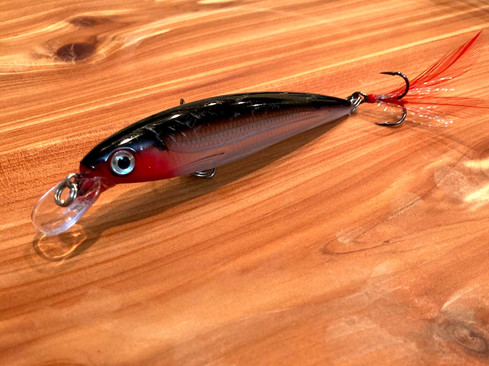Rough Up Your Jerkbait To Catch Late Winter Bass
- Chad Williams
- Feb 24, 2023
- 4 min read
Updated: Feb 28, 2023
Many moons ago a few pro anglers came out talking about how they leave their jerkbaits and crankbaits in the dashboard of their trucks to get the shine off of them.
People at the time thought they were crazy until they started seeing the numbers of fish that these guys were catching, especially on lakes that receive a lot of pressure.
The anglers at the time attributed their late winter fishing success to the sunlight coming through the windshield of their trucks, and over time, "sun baking" the finish of the lures to present a unique, more dull, and less intimidating look to the bass.
Ever since then, anglers that know the story have followed suit to make their own modifications to see a similar uptick in bites.
Even if you haven't heard the story, you may be seeing similar success without even knowing it.
If you're someone who enjoys jerkbait fishing there's a good chance you have at least one in your tackle box that, in your mind, will outfish all the other jerkbaits that you own.
It probably happens to be one that you've had long enough to catch a bunch of fish on and it very well could even have more bite marks on it than it does hooks.
It sounds silly but that "tried and true" jerkbait of yours will catch you more fish than a brand new one of the same type because of how well it imitates the naturally occurring physical features of a banged up baitfish.
Most lure manufacturers are not accounting for this in their design patterns these days and instead try and "Wow" you with a mesmerizing shiny design.
However, that dull, banged up jerkbait with dents and bite marks in it provides more visual queues that bass quickly key in on when compared to the same fresh-off-the-shelf lures.
Below we'll cover some physical feature changes that baitfish undergo to support these lure modifications as well as some tips on how to obtain these features on your own jerkbaits.
Banged Up vs. Nice And Shiny
Despite seeing all the shiny baitfish imitations on the shelves of the fishing section, that generally doesn't carry over to what a baitfish looks like in real life, especially in the winter.
No different than you catching a bass with messed up scales, missing fins, you name it - baitfish face the same issues.

These changes in appearance, as seen on the threadfin shad above, can be the cause of age, the effects of spawn cycles, contact with other objects, or skin infections just to name a few.
It's also worth noting that baitfish spend a lot of their time in the winter in deeper water which translates to a loss of overall color leaving you with a dull, pale-colored baitfish.
This is why a lot of anglers favor white, pearl, or even translucent jerkbaits during the winter season.
Spend enough time winter fishing and you will see for yourself the blemishes and change in color of a baitfish when you come across a dead one floating on the surface.
Imitating Those End-Of-Life Baitfish
If you have a scuffed up jerkbait that appears as if its been through the wringer, find it and tie it on while the water is still cold this year.
By doing so and pairing it with longer pauses in your cadence, you're imitating a baitfish that acts like and looks like one that is ready to kick the bucket.
For those who don't have any "tried and true" jerkbaits, most anglers obtain this look by using high grit sandpaper (220) and sanding off the shiny protective coat to obtain a flatter looking finish.
To make your jerkbait appear as if its missing scales fold your sandpaper in half to create an edge and go over different areas on the top of the lure (as seen in the photo on the right) to truly imitate a beat up, end-of-life baitfish.
Just like all the people who thought the pros were crazy, a simple modification like the one made above doesn't make much sense until you see the uptick in bites as a result.
And to be honest, most lures don't require any sort of modification these days and very seldom does a lure modification make any noticeable difference.
But having said that, and being folks who love winter jerkbait fishing, this is one lure modification that does make a difference since doing such a good job at imitating the naturally occurring physical appearance of most baitfish this time of year.
Whether it be through years of wearing out the same lure or a quick DIY hack, keep those roughed up jerkbaits in the water this time of year.
A beat up jerkbait is about as good as it gets when it comes to presenting a desperate, vulnerable looking lure to those wintertime largies and bronzebacks!
Time to go catch em'!
If you ever have specific questions to topics covered in our articles feel free to reach out!
Connecting with us is easy!
Go to the Home Page
Subscribe so you never miss an article
Respond to the subscriber email with your question
or you can head over to our Contact Us page and send us your question from there.





Comentários